Diary entry, June 6, 1944: “Land (invasion) 7:30 am, little done in the morning, afternoon with information[antry], it turned out to be 4 bunkers. Met other AVREs at 5pm (prox).”
Much has been written about D-Day. Although not much, as evidenced by the words of my grandfather, James “Jim” Baxter, who summarized his part in history’s largest naval invasion in just twenty words.
I didn’t know Jim. He survived Hitler, but died suddenly of a heart attack in 1982, when I was four years old. I had been told that he had driven tanks during the war – heavy, specially designed Churchill AVREs (Armoured Vehicle Royal Engineers), used for breaking through bunkers and clearing obstacles – but I had no idea that he kept a diary until last Christmas had kept track of.
Somehow it rose above the festive whiskeys and was pulled from a shelf: a small, crimson wallet, one week per spread, six small lines per day. Small enough to put in a tunic as you sail across the Channel on your way to France. The message for June 5 reads: “Leaving at sunrise, still heavy seas, most of the boys are sick.”
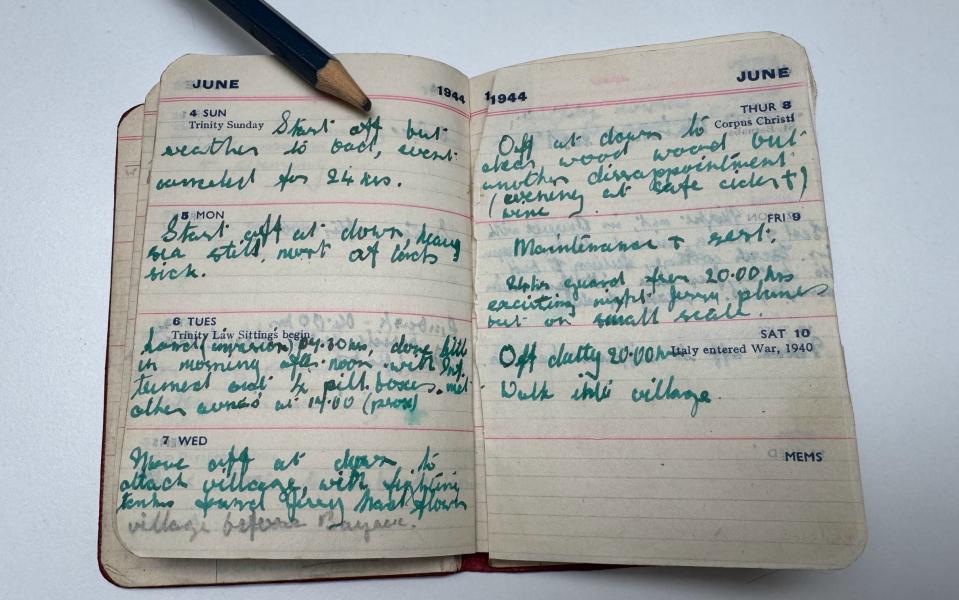
It’s the 80th anniversary of D-Day, with numerous commemorations planned along the Normandy coast. But it is also the end of an era. “A few more veterans are coming by, but perhaps for the last time,” Aurore Bourget from the Bayeux tourist office told me later. “This will be the last big anniversary.”
The baton of memory must now be passed on to the younger generations. It’s a challenge, though: A 2023 British survey found that 41 percent of millennials didn’t know what D-Day was, and only 36 percent thought it was important to have a good knowledge of World War II. After discovering this precious, if scarce, diary, I definitely wanted to know more.
Some digging revealed that Jim was part of the 1st Assault Brigade Royal Engineers, 82 Assault Squadron, and was flying one of his AVREs. He was in the first wave to land on Gold Beach, near the village of Asnelles; his objective was to capture the city of Bayeux, seven miles inland.
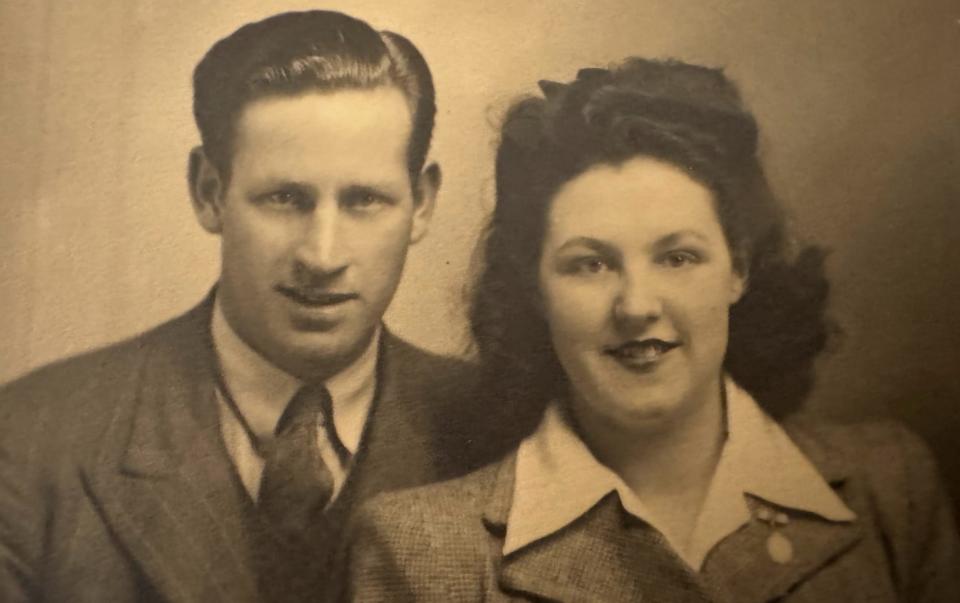

Eighty years later, my husband and I, like Jim, arrived in Normandy by boat early in the morning. Although the experience couldn’t have been more different: calm sea, ruddy sky, a comfortable cabin, breakfast delivered. There were also no enemies who met us on land, only a cheerful Jérôme Barrier from Roulez JEUnesse Loisirs, who was waiting at the port of Ouistreham to hand over some electric bicycles.
Our plan was to cycle west along the Normandy coast for a few days via the Vélomaritime cycle route and then return to Bayeux. We stopped often, looking for links to Jim. For all its historical horrors, this is a beautiful stretch of coast, where quiet roads and cycle paths wind between pretty villas and endless soft, blond sand. It should also be fun.
We set off and immediately detoured for coffee, finding Ouistreham’s main street lined with flagpoles honoring war heroes. We took another break at the D-Day 70th Memorial. And then again at the statue of Bill Millin, who brought his comrades with a bagpipe to Sword, the first of the five D-Day beaches. At this rate, our journey would take a while.
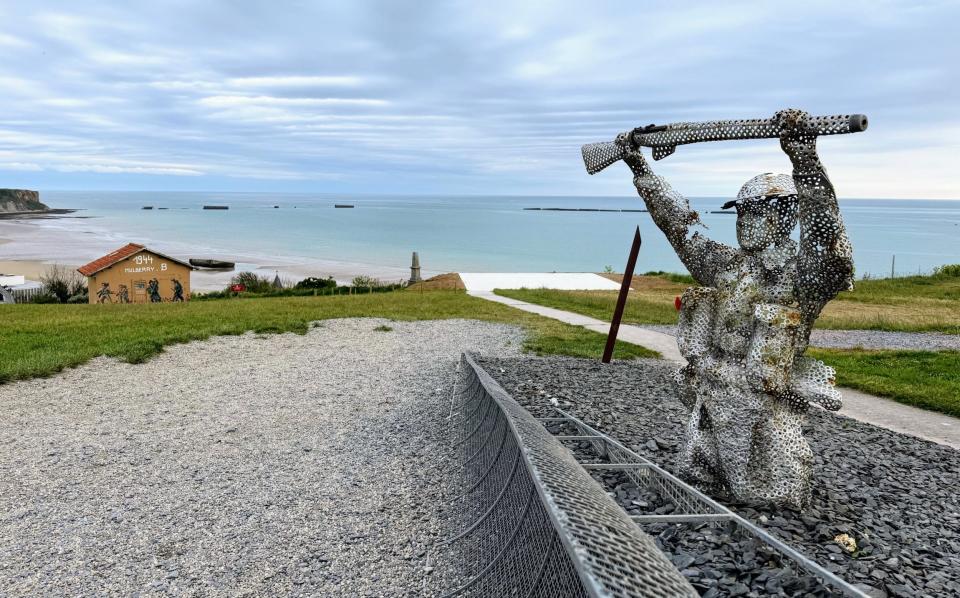

But eventually Sword reached Juno, the second landing beach, and we drove past the seaside resort of Courseulles-sur-Mer. After finding my grandfather’s diary, my parents also dug up his copy of the 1st Assault Brigade Royal Engineers 1943-1945 commemorative book, which shows that 82 Squadron was concentrated near Courseulles in early August 1944 to receive training for the advance to the Seine. Jim doesn’t provide details.
The story at Juno is more of a Canadian story anyway: 14,000 Canadian troops landed here. It is now home to the Juno Beach Centre, which preserves Canada’s D-Day legacy and focuses on education and attracting younger visitors. Exhibits tell age-appropriate stories through technology and gamification, and Canadian student guides lead tours of the German bunkers outside. However, it was the center’s film that hit hardest, especially the words of D-Day veterans: “We had never felt so alone”; “Arms, legs, the dead, the drowned”; “I wanted to cry, but I didn’t have time.”
We set off gloomy despite the sunshine and almost immediately cycled past a Churchill AVRE, stranded behind the dunes at Graye-sur-Mer. It was equipped with a petard mortar, a broad, blunt weapon nicknamed the ‘flying dustbin’, designed to fire at low speed and at close range to take out bunkers. Jim’s tank was equipped with one of these.
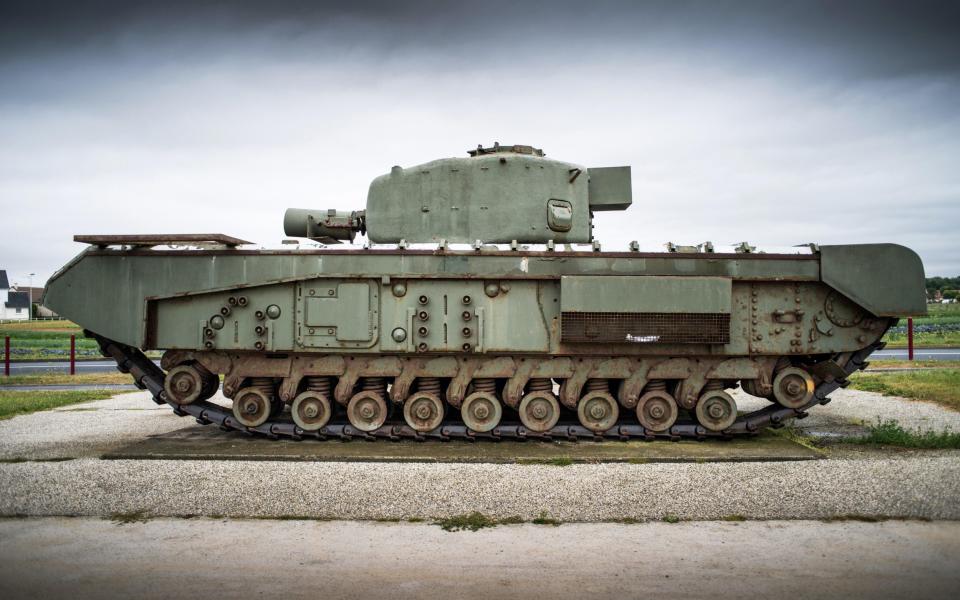

Past Graye we drove into Gold, the third D-Day beach. On June 6, 1944, approximately 25,000 British troops, including Sapper J Baxter, landed here. The chilling figure, however, is 22,442, the number of soldiers who died under British command during the Battle of Normandy. Each of them is honored on the British Normandy Memorial, a limestone colossus that rises on a hill near Ver-sur-Mer. We cycled there and spoke little. The sun was blazing, the sea was a blissful turquoise, but the place hit like a tornado. So many names. Now (until August 31) the monument will suffer an even harder blow: an installation of 1,475 black silhouettes covers the slope below, one for each soldier under British command who died on D-Day itself.
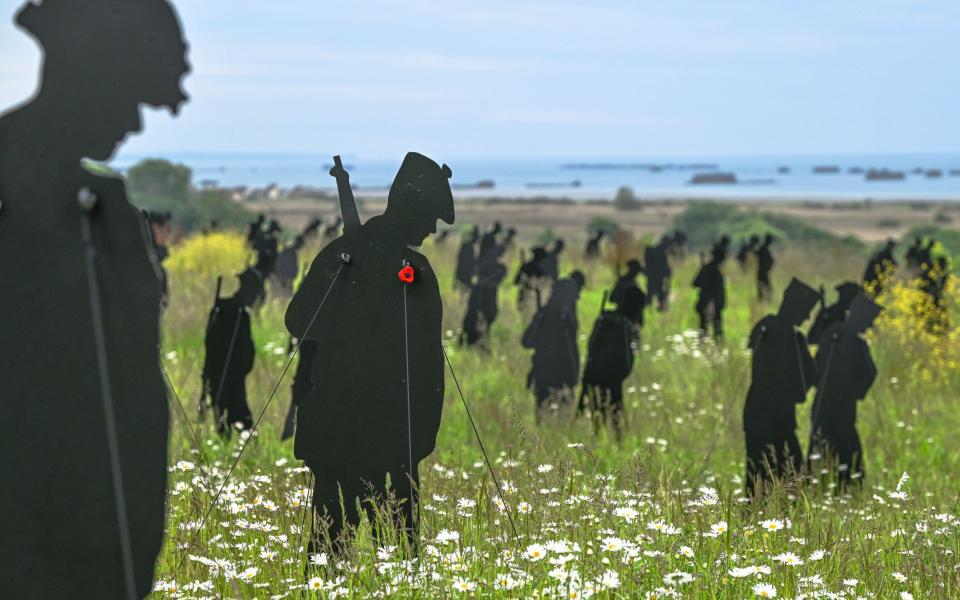

That was enough for one day, and we quickly cycled to Arromanches. Tomorrow we would go back to Gold; now we needed wine. Although we strolled along the beach at dusk, where you can’t ignore the barnacle remains of the Allies’ Mulberry B port. We thought we were dreaming when we heard bagpipes – the ghost of Bill Millin? But no, there were two men on the jetty giving blowjobs Wonderful grace in the wind.
The next day it was cloudy, but luckily not too rough. We cycled back to Asnelles to meet guide Valentin Fessard to hit the waves ourselves. As we dragged kayaks into the shallow water, I asked Valentin if locals were constantly thinking about D-Day. “Not the young ones,” he said. “And of course you want to live a happy life. But it’s in the back of your mind. Especially now, with the way the world is…’
We paddled into the waves and around a sinking phalanx of Phoenix caissons. These warehouse-sized concrete blocks formed the breakwater of Mulberry B, the daring harbor built to supply the invading forces. Its parts were towed across the Channel at walking pace from 6 June; the first parts were placed on the 7th; it was operational on the 18th.
“I remember one day – boom! – a caisson just collapsed,” Valentin told us. And then we sailed through a crack, straight into one. We bobbed in its cavernous belly and looked up at the high walls, now covered in soft anemones. “The caissons are not built to last,” Valentin said. “In thirty years they will be gone.”
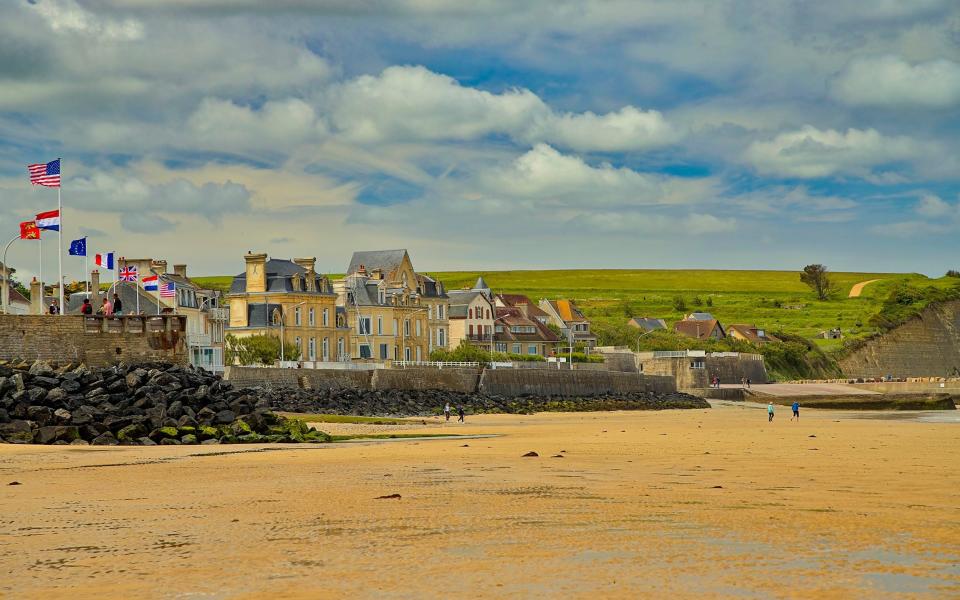

As we turned our kayaks back to the beach, it struck me that this was it: this place, this approach from the sea. Jim’s route in – minus every ounce of danger. It was impossible to imagine. So, back on land, we visited Widerstandsnest 37, the defense post that guarded part of Asnelles and ravaged the Allies on D-Day – the bunker still stands on the promenade. WN37 was finally neutralized by the Essex Yeomanry at 3pm on 6 June.
But they were assisted by the Hampshires and Lance Sergeant Scaife’s AVRE, who had lost contact with the rest of 82 Squadron and so joined the Hampshires to help clear obstacles. According to reports, LSgt Scaife used his petard against the position “with considerable success”; for his actions he received the Distinguished Conduct Medal. My grandfather was in the AVRE of LSgt Scaife. The Hampshires are the “Inf” he has joined; this was one of his “4 bunkers”.
We cycled further along the coast to Saint-Laurent-sur-Mer, on Omaha Beach, a place with even bloodier stories. But my thoughts were now turned to Bayeux. So the next day we cycled inland, along lanes that were only just tank wide, to reach the medieval city. It is a beautiful place, with an imposing cathedral and shop windows cheerfully illustrated to mark the 80th anniversary. Jim had evenings here. On July 1 he wrote: “ENSA [Entertainments National Service Association] concert in Bayeux. Swing band.” I didn’t feel like dancing myself, especially after a visit to the city’s British Military Cemetery, where among the 4,648 graves I found Major HGA Elphinstone, commander of 82 Squadron. On D-Day he was killed almost immediately.
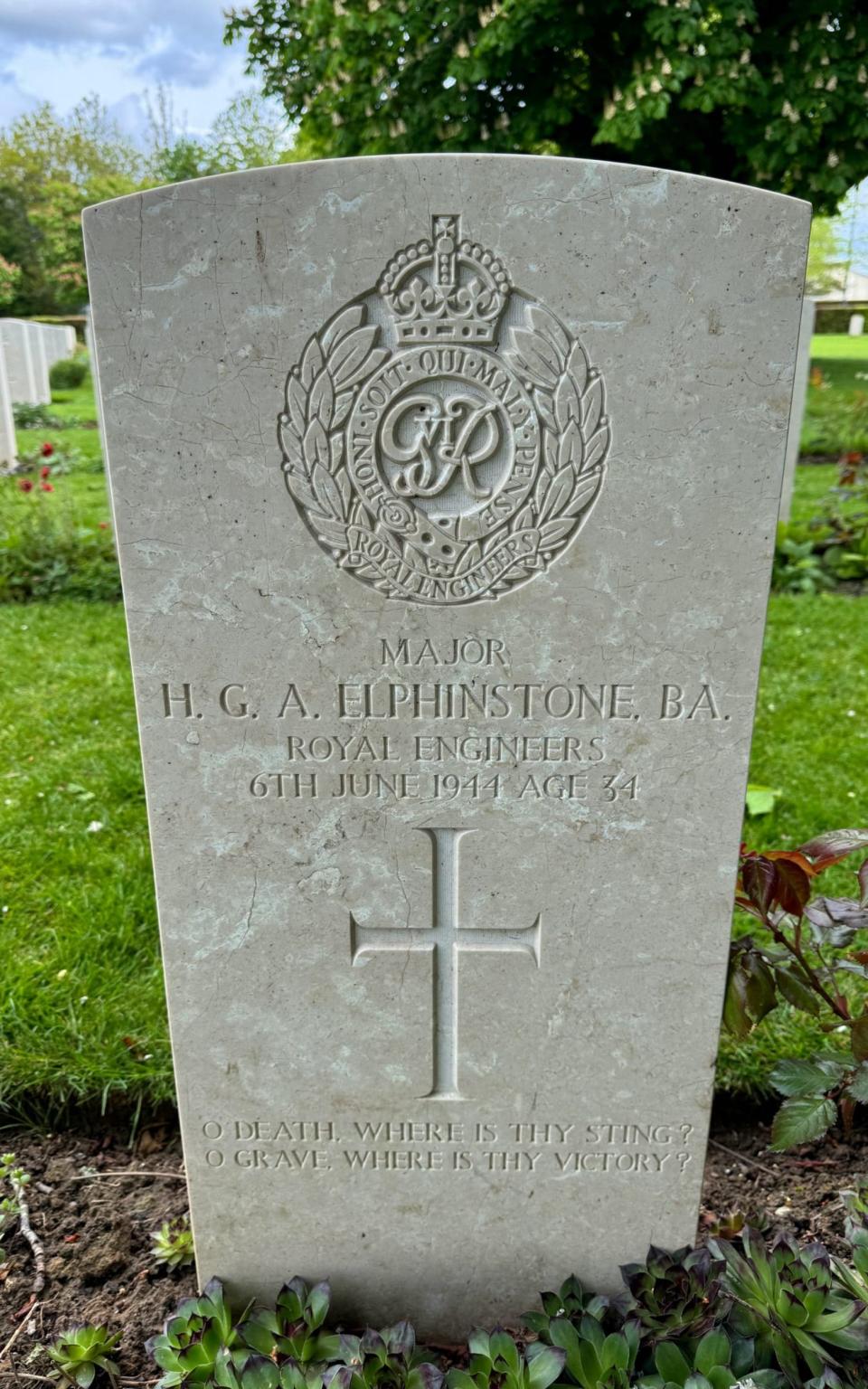

However, there was one last place I wanted to go. On June 7, Jim wrote: “Leave at dawn to attack the village with main battle tanks. I found out that Jerry had flown. Village before Bayeux.” Frustratingly vague. But the Brigade Book records that the 82nd “assembled at St. Sulpice” on that date. I found it on the map, a dot northeast of the ring road, “before Bayeux” from the direction of Gold Beach. Off we went.
There was little to see except the 13th century church, from which the spiers of Bayeux Cathedral were visible in the distance. The church was locked, but we walked around the graves: Bernard Sallent, born 1932; Thérese Blet, born in 1934. Children in 1944. Were they here when the British tanks rolled in? Would they have remembered Jim Baxter and the brave men like him? I certainly will.
How to do that
Brittany Ferries (0330 159 7000; brittany-ferries.co.uk) offers return Portsmouth-Caen/Ouistreham crossings from £98 for foot passengers, from £206 for a car plus two passengers.
Hôtel L’Ideal in Arromanches (hotel-lideal.fr) has B&B doubles from £67pn. La Sapiniere in Saint-Laurent-sur-Mer (la-sapiniere.fr) has double rooms from £120 for a room only. Hotel de Brunville in Bayeux (hotel-de-brunville.com) has B&B doubles from £60pn.
Renting an e-bike costs £29 per day, £70 for three days (roulezjeunesse.bike). Kayaking from Asnelles costs £35 pp (charavoile-asnelles.fr).
More information at calvados-tourisme.co.uk; bayeux-bessin-tourisme.com; en.normandie-toerisme.fr.
Recommended reading includes the Bradt Guide to the D-Day Landings (£9.99; bradtguides.com).